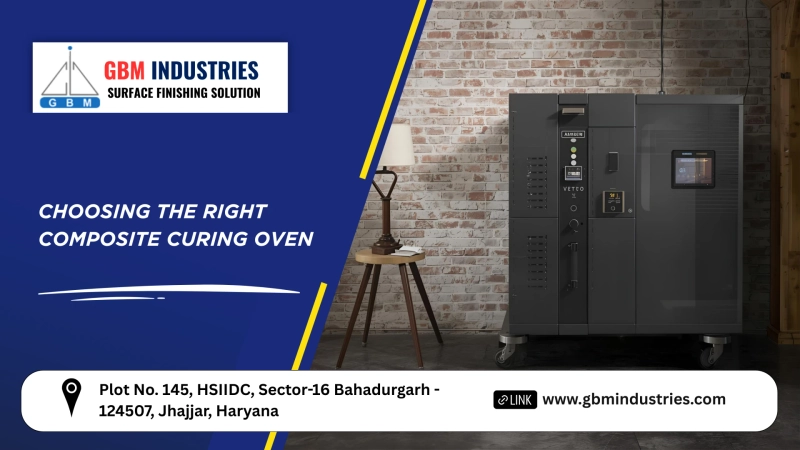Composite Curing Oven
Composites are reshaping modern manufacturing. From aerospace structures and automotive components to wind energy, medical devices, and high-performance sports gear, these materials offer unmatched strength-to-weight ratios, durability, and design flexibility. As industries push for lighter, stronger, and more efficient solutions, composites are increasingly replacing metals, plastics, and traditional construction materials.
Central to this evolution is the composite curing process. Industrial composite curing ovens are no longer optional—they’re critical for transforming raw fiber-resin blends into fully cured, high-performance components. Proper curing ensures structural integrity, reliability, and long-term durability, while reducing defects and production inefficiencies. In today’s competitive landscape, selecting the right composite curing oven can make the difference between a breakthrough product and costly rework.
This article breaks down everything you need to know about composite curing ovens: from temperatures and airflow to the features that make them stand out. Let’s dive in!
What are Composite Curing Ovens?
A composite curing oven is an industrial oven designed specifically to cure composite materials such as carbon fiber, fiberglass, Kevlar, and epoxy resins. Unlike regular curing ovens, these are engineered to handle complex heating cycles and maintain precise conditions for long durations.
Why are they so important? Because curing composites is not just about heating—it’s about achieving chemical crosslinking that gives the material its ultimate strength, durability, and resistance.
Where Are They Used?
Composite curing ovens play a role across multiple industries:
- Aerospace – fuselage panels, aircraft wings, interior components
- Automotive – lightweight car parts, racing components
- Defense – ballistic panels, weapon housings
- Sports & Marine – surfboards, bicycles, boats, helmets
- Wind Energy – turbine blades and other structural components
In short, if the product needs to be lightweight yet incredibly strong, it has probably passed through a composite curing oven.
Temperatures of Composite Curing Ovens
Temperature control is the backbone of composite curing. Materials like carbon fiber reinforced plastics require specific heat ranges to ensure complete curing without defects.
Typical curing ovens operate between 250°F and 800°F (120°C to 425°C), but advanced systems can handle higher ranges depending on the resin system used.
Why Does Temperature Matter?
- Uniform curing: prevents under-cured (weak) or over-cured (brittle) parts
- Consistent bonding: ensures resins fully harden and bond with fibers
- Quality assurance: avoids surface cracks, voids, or delamination
Modern composite curing ovens feature programmable temperature profiles that automatically control ramp-up rates, soak times, and cool-down phases. This automation removes guesswork, delivering repeatable results every time.
Airflow in Curing Ovens
Temperature alone isn’t enough. Even if your oven reaches the right heat, uneven airflow can cause hotspots and cold zones—ruining entire batches of composites. That’s why airflow design is critical in composite curing ovens.
Common Airflow Patterns:
- Horizontal Airflow – Air moves side to side; great for flat parts.
- Vertical Airflow – Air circulates top to bottom; ideal for stacked components.
- Combination Airflow – Mix of both, ensuring even curing for complex or large parts.
Efficient airflow guarantees every surface of your composite receives uniform heat treatment. For manufacturers working with aerospace or large automotive parts, poor airflow isn’t just a quality issue—it’s a potential safety hazard.
Key Features of Composite Curing Ovens
Not all curing ovens are built the same. If you’re investing in a composite curing oven, here are the features you should never compromise on:
- Precise Temperature Control—Accurate and uniform temperature distribution throughout the chamber is crucial. High-volume airflow designs and advanced control systems allow precise temperature programming and monitoring.
- Vacuum Bagging Capability—Some ovens require vacuum bagging systems, which remove air around the composite part during curing to improve compaction and eliminate voids.
- Safety Features—Composite materials may be off-gas during curing, so ovens often include ventilation systems and explosion-proof safety features.
- Fast Ramping and Cooling Rates—Curing ovens designed to heat up and cool down quickly boost productivity by reducing overall cycle times for curing processes. They also cut down on energy costs.
- Rugged Construction: Look for curing ovens known for their durability and high uptime with minimal maintenance requirements.
Conclusion
A composite curing oven is more than just a heating chamber—it’s the backbone of modern composite manufacturing. From maintaining precise curing ovens temperatures and ensuring uniform airflow to offering advanced features like vacuum integration and data logging, the right oven directly impacts your product quality and business success.
If you have questions about industrial ovens, check out our field guide to buying an industrial oven. Or, you can call our skilled customer service team to assist you. Please call +91 9996055996



